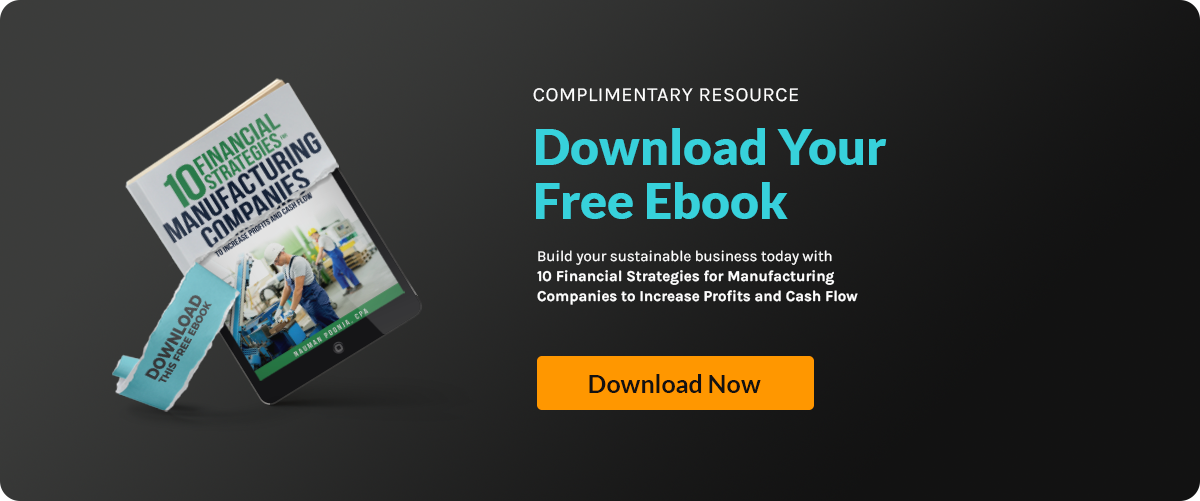In the fast-paced manufacturing world, staying ahead of the curve is not just an advantage; it's a...
Manufacturing Rolling Forecasting Techniques
.png?width=720&height=480&name=2%20(1).png)
Does your manufacturing company need help to keep its financial plans relevant in a dynamic environment?
The benefits of rolling forecasting are significant for manufacturing companies. A recent analysis reveals that nearly 86% of manufacturing executives consider the adoption of advanced technologies, including rolling forecasts and innovative factory solutions, crucial for maintaining competitiveness over the next five years.
Rolling forecasting provides a flexible and adaptive approach to financial planning, empowering you, the manufacturing executive, to stay in control. Unlike static forecasts, which can quickly become outdated, rolling forecasts are continuously updated to reflect the latest data and trends. You can respond promptly to changes and make informed decisions that drive your business forward.
Discover how rolling forecasting can transform your financial planning, optimize resource allocation, and enhance your company's agility. Read on to unlock the full potential of your financial strategy.
Importance of Forecast Accuracy
Accurate forecasts are crucial for effective budgeting in manufacturing. They help improve accuracy and align quarterly and annual budgets with market conditions. Rolling forecasts offer flexibility that traditional budgeting lacks. This approach prevents supply chain disruptions and helps avoid time-consuming adjustments due to inaccurate forecasts.
Inaccurate forecasts can hinder decision-making and cause financial disruptions. Traditional budgeting methods are often rigid and must adapt to sudden market changes, which can be a burden. Rolling forecasts, however, provide a current model that evolves with changing conditions, offering relief from the stress of sudden changes.
Benefits of Enhanced Rolling Forecasting
Manufacturing businesses that rely heavily on traditional static annual budgets often face unexpected disruptions. Using a rolling forecast, you can keep your business performance up-to-date and responsive to market changes. Here are the key benefits of enhanced rolling forecasting:
1. Better Decision-Making
With a current forecast model, business leaders can make more informed business decisions. This up-to-date information helps plan and analyze, ensuring the company adapts quickly.
2. Flexibility in Planning
Rolling forecasts adjust the forecast period regularly, allowing for better alignment with the business cycle and various parts of the business.
3. Enhanced Performance Tracking
By using periodic updates, companies can track performance against the forecast. Variance analysis becomes more straightforward and practical, providing insights into what's going well and what needs improvement.
4. Mitigation of Risks
Rolling forecasts help mitigate risks by providing a clearer view of internal and external factors affecting the business.
5. Lifecycle Management
Rolling forecasts create new opportunities for managing the business lifecycle. This continuous process helps refine strategies and improve overall business performance.
Implementing Advanced Projection Methods
Advanced projection methods use sophisticated techniques to forecast accuracy improvement and reflect changing business conditions. These methods help businesses stay agile and responsive. Here’s how to implement advanced projection methods in your planning process:
Step 1: Identify Key Metrics
Determine which metrics are crucial for your business units. Focus on those that directly impact decision-making and performance. Identifying the right metrics ensures that the data used in forecasting is relevant and valuable.
Step 2: Evaluate Current Forecasting Shortcomings
Analyze the shortcomings of your existing forecasting methods. Identify areas where traditional forecasts have become obsolete or less functional. This evaluation helps highlight the gaps and inefficiencies in the current system.
Step 3: Integrate Advanced Projection Tools
Implement tools that allow for advanced projection techniques. These tools help shorten the forecast period and improve accuracy. Integrating these tools ensures your forecasting process is more dynamic and reflective of real-time data.
Step 4: Train Your Team
Ensure that your team understands how to use the new tools and methods. Provide training sessions to get everyone up to speed. Proper training is essential to maximize the benefits of advanced projection methods.
Step 5: Collect and Analyze Data
Gather data from within the company and external sources. Update your data regularly to reflect changing conditions. Consistent data collection and analysis keep forecasts accurate and relevant.
Step 6: Apply Advanced Projection Techniques
Use advanced methods such as scenario analysis and predictive modeling. These techniques improve forecast accuracy and reflect changing business dynamics, helping to create more reliable forecasts.
Step 7: Review and Adjust Regularly
Continuously monitor the effectiveness of your projections. Make adjustments as necessary to keep forecasts relevant and accurate. Regular reviews ensure that the estimates remain aligned with current business conditions.
Step 8: Communicate Across Business Units
Share projections and insights with all relevant business units. Ensure everyone is aligned and informed for better decision-making. Effective communication helps integrate projections into the overall business strategy.
Techniques for Accuracy Improvement
Spotting the need for accuracy improvement in forecasts is crucial for effective business processes. When forecasts consistently differ from actual outcomes, it's time to enhance accuracy. Improved forecast accuracy helps many organizations make better strategic decisions and respond to changes in real-time. Employing best practices ensures that your forecasts remain reliable as new data comes in. Here are some effective techniques for accuracy improvement:
- Automate data collection using automated systems to reduce manual errors.
- Implement cloud-based solutions for real-time updates and accessibility.
- Use advanced analytics to identify patterns and trends in your data.
- Incorporate real-time data to ensure forecasts are updated as new data comes in.
- Regularly review and adjust forecasts to reflect current conditions.
- Engage in scenario planning to anticipate various outcomes and their impacts.
- Leverage AI and machine learning to enhance prediction accuracy.
Partner with Accounovation for Accurate Rolling Forecasting
Tapping into professionals for rolling forecasting can transform your financial planning. Experts provide tailored insights, ensuring your forecasts are accurate and responsive to the dynamic market.
Accounovation leverages deep manufacturing insights and your unique financial patterns to uncover hidden growth opportunities. Our specialized approach ensures your forecasts are precise and actionable.
Contact Accounovation today to enhance your financial strategy and discover growth opportunities.
Frequently Asked Questions
Can rolling forecasting help manage cash flow more effectively?
Rolling forecasting is particularly effective in managing cash flow. A current view of revenue and expenses enables businesses to anticipate their cash flow needs accurately. Regular forecast adjustments further enhance cash flow management and help prevent liquidity issues.
What role does historical data play in rolling forecasting?
Historical data plays a crucial role in rolling forecasting. It is a foundation for future projections, allowing businesses to create more accurate and reliable estimates. Rolling forecasts can be more robust and insightful by analyzing past performance and integrating it with current actuals.
How can rolling forecasting adapt to changes in the macroeconomic environment?
Rolling forecasting incorporates real-time updates and external factors, such as macroeconomic changes, into the planning process. This adaptability helps businesses respond quickly to economic shifts, ensuring their financial plans remain relevant and practical.







